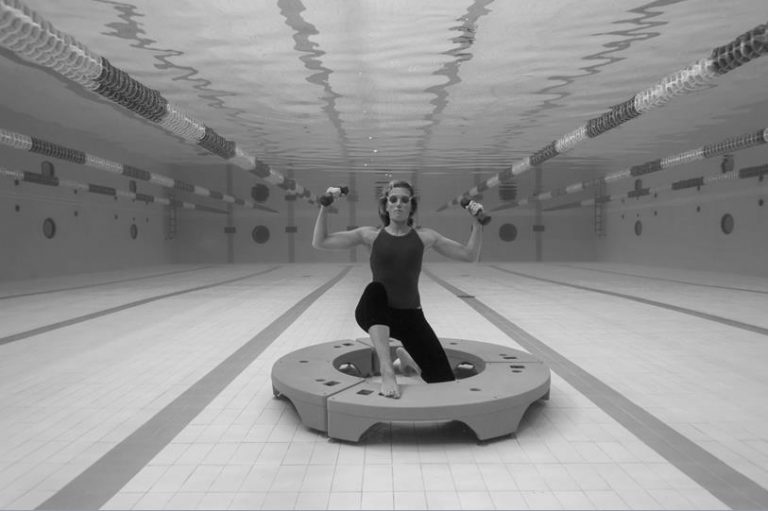Anyone who is physically active knows how frustrating it can be to deal with pain or physical limitations due to injury. Missing out on the activities we love is no fun, and hours of rest, ice, stretching, and anti-inflammatories sometimes aren’t good enough. Eventually it may seem that the only way to return to a normal lifestyle is to seek out an orthopedic specialist, opening the door to injections and possible surgeries.
Surgery isn’t for everyone though, and as a healthcare consumer it’s important for you to understand the options that you have available to you when it comes to taking care of your body. Here are some of the reasons you should at least consult with a physical therapist before scheduling any orthopedic surgery.
Surgery may provide short-term relief, but physical therapy can provide a more permanent solution
As more research demonstrating the benefits of physical therapy becomes available, more physicians and even orthopedic surgeons are encouraging their patients to at least attempt physical therapy prior to surgery. Unfortunately (and somewhat understandably), many of these patients are not willing to endure further pain and disability and prefer to schedule an operation earlier with hopes of quicker relief. The problem with this “quick fix” approach, however, is that in many instances these patients aren’t able to sustain their relief long-term because they haven’t yet addressed the root cause of their pain or injury.
In many cases these symptoms developed gradually over a long period of time, such as shoulder pain due to poor posture, or overuse injuries due to mobility, strength, or movement deficits. Likewise, full recovery often takes time and commitment, and patients who are willing to be patient will eventually find that they are “over the hump” and able to return to the activities they love without limitation.
In one example of this concept, a 2013 study of patients with cervical radiculopathy demonstrated more rapid improvement for those who had a cervical decompression and fusion (87% reported their neck pain and function were “much better” after the first year) compared to physical therapy alone (62%). After two years, however, 81% of the surgical group reported that they were “much better”, while 69% of the physical therapy group reported the same. Unlike the patients who participated in physical therapy, the patients who elected for surgery earlier likely had less motivation to build lifelong habits, and as a result their improvements in pain and function started to wane over time.
Surgery isn’t necessarily more effective than physical therapy
There are certainly instances where surgery is the best treatment option for restoring normal function, particularly following any traumatic injury such as a ligament tear or broken bone. For every instance where surgery is indicated though, there are even more examples of injuries that are successfully managed without surgical intervention. In fact, many recent studies of patients with musculoskeletal injuries have found little difference in outcomes between those who opted for surgery and those who participated in physical therapy instead.
In a 2014 study of 180 subjects with non-traumatic rotator cuff tears, researchers found no significant difference in pain or function at one-year follow-up, regardless of whether the subjects had surgery and physical therapy or just physical therapy alone. Similarly, a 2018 study of 321 subjects with meniscal tears found no meaningful difference in outcomes at 2 years between patients that had a partial meniscectomy and those assigned to physical therapy. In both cases, the additional expenses involved with having surgery didn’t provide any additional benefit compared to conservative care.
Physical therapy is seen as the more “conservative” approach for a reason
As any surgeon will tell their patients, with every operation there are certain risks involved. Despite these risks and continued evidence in support of physical therapy, many people still want the “quick fix”. Sure, serious adverse events and surgical complications are rare, but minor complications such as prolonged pain and swelling and wound infection are common. A 2018 study of spinal surgeries at one facility found that 28% of patients had complications within the first 90 days, and while 2/3 of these were mild complications, the average length of hospital stay rose from 2.3 to 10.7 days with at least one complication.
It’s important to note at this point that the goal of this post is not to scare everyone away from having surgery. However, it’s crucial that patients understand the risks involved with any procedure, risks that are almost non-existent when working with a good physical therapist. In most situations, this is why physical therapy should be the first course of action and surgery should be a last resort. If surgery does become part of the care plan, physical therapists are also well-qualified to help patients manage their expectations prior to and after the operation.
Physical therapy will probably be inevitable anyway
Regardless of whether someone elects for surgery or not, they will likely participate in some form of physical therapy. Some health insurance providers require an episode of PT before they will agree to cover their share of the procedure or any related imaging. In some cases doctors will recommend a few “prehab” visits to a physical therapist before the operation, and most surgical procedures will be followed by a period of physical therapy to restore mobility, strength, and function.
There may even be little difference in how much physical therapy someone attends whether they initially have surgery or not. For example, a 2013 study compared the results of surgical intervention and physical therapy alone for patients with symptomatic meniscal tears and knee osteoarthritis. Researchers again found minimal difference in outcomes at 6 and 12 month follow-ups, although 30% of the physical therapy group eventually elected to have surgery anyway. In this population, even the subjects who initially had surgery participated in an average of 6.9 physical therapy visits over 6 weeks, compared to just 8.4 visits in the PT group.
In a best case scenario, physical therapy may be sufficient for reducing pain and restoring full function without the need for invasive procedures. At worst, physical therapy will better prepare patients physically and mentally for surgery and the subsequent recovery process.
Physical therapy is about more than just relieving pain
Pain is typically not the motivating factor for people seeking out a physical therapist. Yes, pain is likely part of the equation, but people all over the world live in pain every day and don’t go to see a PT. It’s the activities that this pain is interfering with that create the true motivation. When it comes to improving your ability to do the things you need to do or love to do, the benefits of working with a physical therapist are endless.
Beyond designing a comprehensive rehab program to help you effectively address the true cause of your limitations and build better lifelong habits, physical therapists are also invested in you as a person. No other health care professional will spend as much time with you over a certain period of time, especially if you find a physical therapist that’s able to work with you one-on-one. Establishing a relationship with a physical therapist is one of the best things you can do for your long-term health and performance, whether you’re an athlete training for your next competition or an aging adult looking to maintain your strength and mobility over time.
At FLO Physical Therapy & Performance we specialize in finding the right treatment approach for our clients to help them reach their goals and avoid costly and unnecessary surgeries. Contact us anytime to find out what we can do for you!
References:
- Engquist M, Löfgren H, Öberg B, et al. Surgery versus nonsurgical treatment of cervical radiculopathy: a prospective, randomized study comparing surgery plus physiotherapy with physiotherapy alone with a 2-year follow-up. Spine (Phila Pa 1976). 2013;38(20):1715-1722.
- Kukkonen J, Joukainen A, Lehtinen J, et al. Treatment of non-traumatic rotator cuff tears: A randomised controlled trial with one-year clinical results. The Bone & Joint Journal. 2014;96-B(1):75-81.
- van de Graaf VA, Noorduyn JCA, Willigenburg NW, et al. Effect of early surgery vs physical therapy on knee function among patients with nonobstructive meniscal tears: the escape randomized clinical trial. JAMA. 2018;320(13):1328-1337.
- Camino Willhuber G, Elizondo C, Slullitel P. Analysis of postoperative complications in spinal surgery, hospital length of stay, and unplanned readmission: application of dindo-clavien classification to spine surgery. Global Spine J. 2019;9(3):279-286.
- Katz JN, Brophy RH, Chaisson CE, et al. Surgery versus physical therapy for a meniscal tear and osteoarthritis. New England Journal of Medicine. 2013;368(18):1675-1684.




